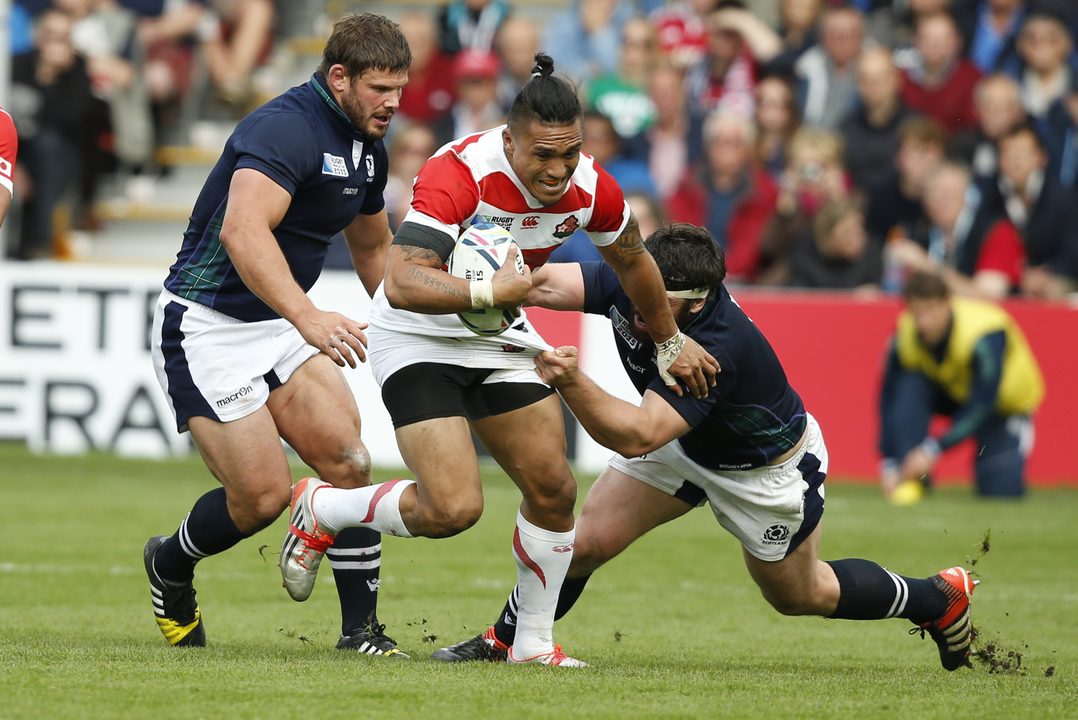An Overview of the Risk of Concussions in Rugby Union and League
Rugby is a beloved sport around the world, but there is a potential for serious injury, especially when it comes to concussions. Both Rugby Union and Rugby League have a risk of concussion, but which one has the higher potential for this type of injury?
Rugby League and Concussions
Rugby League is a full-contact sport and players are allowed to make contact with each other using their hands and feet, as well as tackle and scrum. This physicality means that players are more likely to experience a concussion due to the increased contact. The risk is further increased by the high speeds that players reach when running and tackling. Rugby League players are also more likely to suffer head injuries due to the lack of protective equipment, such as helmets, that are used in some other sports.
Rugby Union and Concussions
Rugby Union is a slightly different sport in terms of contact and tackling compared to Rugby League. While contact is still allowed, it is more limited and players are not allowed to tackle each other with their hands or feet. This reduces the risk of concussion significantly, as players are less likely to experience high speed collisions. Additionally, players in Rugby Union are encouraged to wear protective equipment, such as helmets, to further reduce the risk of concussion.
Concussions in Rugby: Summary
In conclusion, it is clear that Rugby League has a higher potential for concussion due to the increased physicality and lack of protective equipment. Although Rugby Union has a lower risk of concussion, it is still important for players to take the necessary precautions to ensure their safety. By wearing the appropriate equipment and following the rules of the game, players can minimize the risk and enjoy a safe and enjoyable game of rugby.
Exploring the Different Safety Measures of Rugby Union and League to Reduce Concussion Risk
When it comes to professional sports, the risk of injury is always present. This is especially true when it comes to contact sports such as rugby union and rugby league. Both of these sports involve tackling and other physical contact, which can lead to concussions, a form of traumatic brain injury. While both sports have implemented safety measures to reduce the risk of concussion, it is important to understand which sport has more effective safety measures in place.
Rugby union has implemented several safety measures to reduce the risk of concussion. For starters, the sport has a strict zero tolerance policy for tackles that involve contact with the head. Players who engage in this type of tackle can be removed from the game and face further disciplinary action. The sport also requires players to wear protective headgear and has implemented rules that limit the amount of time a player can be in contact with another player.
Rugby league has also implemented safety measures to reduce the risk of concussion. The sport requires players to wear protective headgear, and it has a strict no-tolerance policy for tackles that involve contact with the head. The sport also has rules that limit the amount of time a player can be in contact with another player. Additionally, the sport has implemented a concussion protocol that requires players to be assessed by medical staff if they show signs of a concussion.
So which sport has more effective safety measures in place to reduce the risk of concussion? While both sports have implemented safety measures to reduce the risk of concussion, rugby union appears to have more stringent safety measures in place. The sport has a zero-tolerance policy for tackles that involve contact with the head, and it requires players to wear protective headgear. Additionally, the sport has rules that limit the amount of time a player can be in contact with another player. In contrast, rugby league has a no-tolerance policy for tackles that involve contact with the head and requires players to wear protective headgear, but does not have any additional rules that limit the amount of time a player can be in contact with another player.
In conclusion, rugby union appears to have more effective safety measures in place to reduce the risk of concussion than rugby league. The sport has a strict zero-tolerance policy for tackles that involve contact with the head, and it requires players to wear protective headgear. Additionally, the sport has rules that limit the amount of time a player can be in contact with another player. These safety measures appear to be more effective at reducing the risk of concussion than the measures implemented by rugby league.
Comparing and Contrasting the Different Rules of Rugby Union and League to Reduce Concussion Risk
Rugby is a sport that is beloved by millions around the world. It is a physical and contact sport, and that means that injuries are a part of the game. One of the biggest concerns in rugby is the risk of concussions and the potential long-term effects they can have. So, how do the two main forms of rugby, rugby union and rugby league, compare in terms of concussion risk?
Tackling
The way that tackles are conducted is one of the most significant differences between union and league when it comes to concussion risk. Rugby League uses a “one-on-one” style of tackle, meaning that one player is attempting to bring down the ball carrier with their own body weight. Rugby Union, on the other hand, is based on the “ruck” system, where two or more players attempt to bring down the ball carrier, often leading to more physical contact.
Head Contact
Head contact is also a major factor when it comes to concussion risk. Rugby League has stricter rules regarding head contact, as it is illegal for the tackler to target the ball carrier’s head. Rugby Union is less strict in this regard, as it is not illegal to make contact with the head of the ball carrier, but it is still discouraged.
Protective Gear
The use of protective gear is also an important consideration when it comes to concussion risk. Rugby League players are required to wear protective headgear, whereas Rugby Union players are not. This means that Rugby League players have an extra layer of protection from head injuries.
Conclusion
Overall, it is clear that Rugby League has stricter rules and regulations when it comes to tackling and head contact, as well as the use of protective gear. This means that the risk of concussion is generally lower in Rugby League than in Rugby Union. By understanding and following the rules of each form of rugby, players can help to reduce their risk of concussion and enjoy a safer and more enjoyable game.
Investigating the Impact of Player Position on the Risk of Concussions in Rugby Union and League
When it comes to contact sports, rugby union and league are two of the most popular. Both sports have a long history and a loyal following, and they both involve a lot of physical contact. That said, the question of which has more concussions, rugby union or league, is a common one. In this article, we’ll take a closer look at the impact of player position on the risk of concussions in rugby union and league.
The Impact of Player Position on Concussions in Rugby Union
In rugby union, the impact of player position on the risk of concussion is significant. Forwards, who are generally bigger and heavier, are more likely to suffer from concussions than backs, who are typically smaller and lighter. This is because forwards are more involved in the physical aspects of the game and are more likely to be involved in the contact that leads to head injuries.
The position of the player is also important. Forwards who are in the front row are at higher risk of concussion than those who are in the second or back row. This is because they are more likely to be involved in scrums and rucks, which are areas where players are more likely to collide and suffer head injuries.
The Impact of Player Position on Concussions in Rugby League
When it comes to rugby league, the impact of player position on the risk of concussion is a bit different. In this sport, the risk of concussion is higher for the forwards than for the backs. This is because the forwards are more likely to be involved in the contact that leads to head injuries. The position of the player is also important. Forwards who are in the front row are at higher risk of concussion than those who are in the second or back row.
In addition, the physical size and strength of the players also plays a role in the risk of concussion in rugby league. Players who are bigger and stronger are more likely to suffer from concussions than those who are smaller and weaker. This is because they are more likely to be involved in the contact that leads to head injuries.
Conclusion
Overall, it is clear that the position of the player is an important factor when it comes to the risk of concussion in both rugby union and league. Forwards, who are generally bigger and heavier, are more likely to suffer from concussions than backs, who are typically smaller and lighter. In addition, the physical size and strength of the players also plays a role in the risk of concussion in rugby league. Players who are bigger and stronger are more likely to suffer from concussions than those who are smaller and weaker.
It is also important to note that the risk of concussion is higher for the forwards than for the backs in both rugby union and league. This is because the forwards are more likely to be involved in the contact that leads to head injuries. Finally, the position of the player is also important. Forwards who are in the front row are at higher risk of concussion than those who are in the second or back row.

